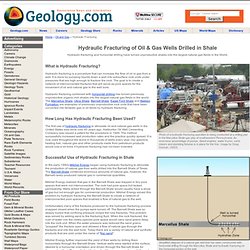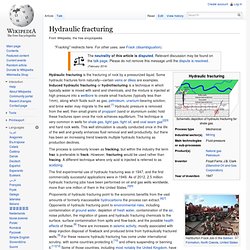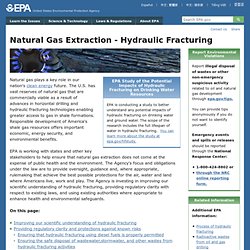

Hydraulic Fracturing of Oil & Gas Wells Drilled in Shale. What is Hydraulic Fracturing?

Hydraulic fracturing is a procedure that can increase the flow of oil or gas from a well. It is done by pumping liquids down a well into subsurface rock units under pressures that are high enough to fracture the rock. Hydraulic fracturing. The first experimental use of hydraulic fracturing was in 1947, and the first commercially successful applications were in 1949.

As of 2012, 2.5 million hydraulic fracturing jobs have been performed on oil and gas wells worldwide, more than one million of them in the United States.[4][5] Frac job in progress Geology[edit] Mechanics[edit] Fracturing in rocks at depth tends to be suppressed by the confining pressure, due to the immense load caused by the overlying rock strata and the cementation of the formation. EPA Hydraulic Fracturing. EPA Study of the Potential Impacts of Hydraulic Fracturing on Drinking Water Resources EPA is conducting a study to better understand any potential impacts of hydraulic fracturing on drinking water and ground water.

The scope of the research includes the full lifespan of water in hydraulic fracturing. You can learn more about the study at epa.gov/hfstudy. Fracking theory.